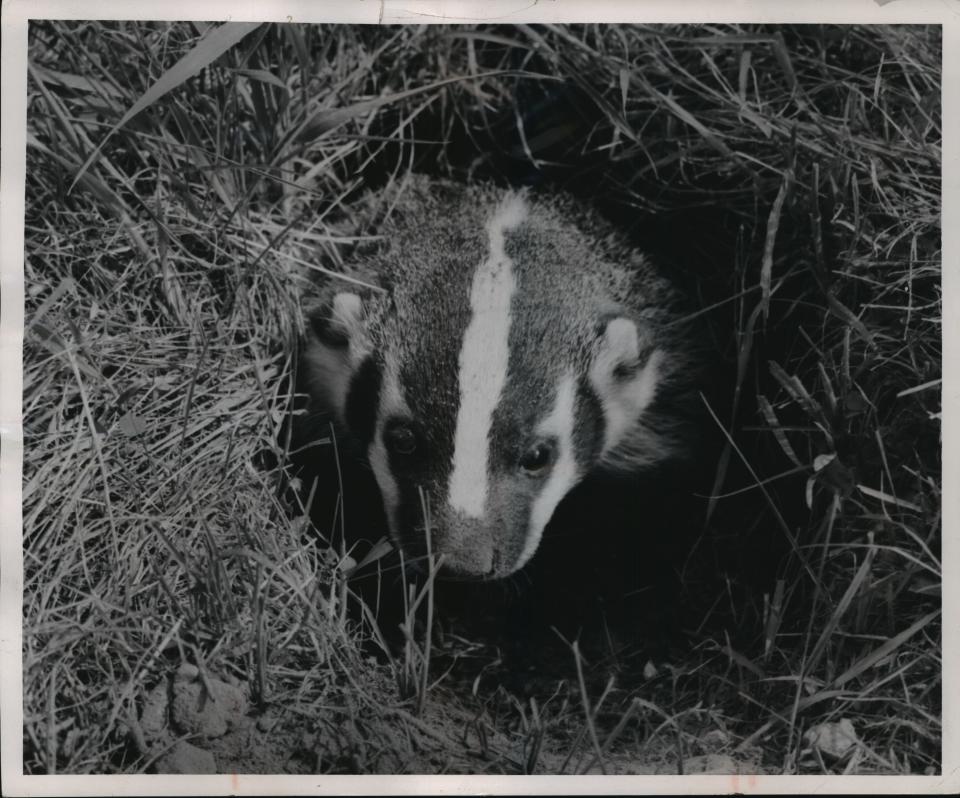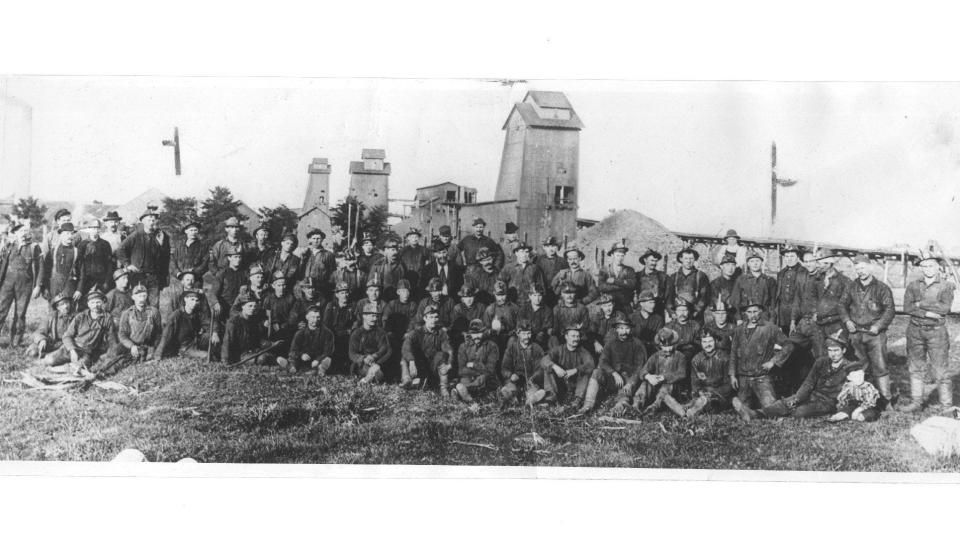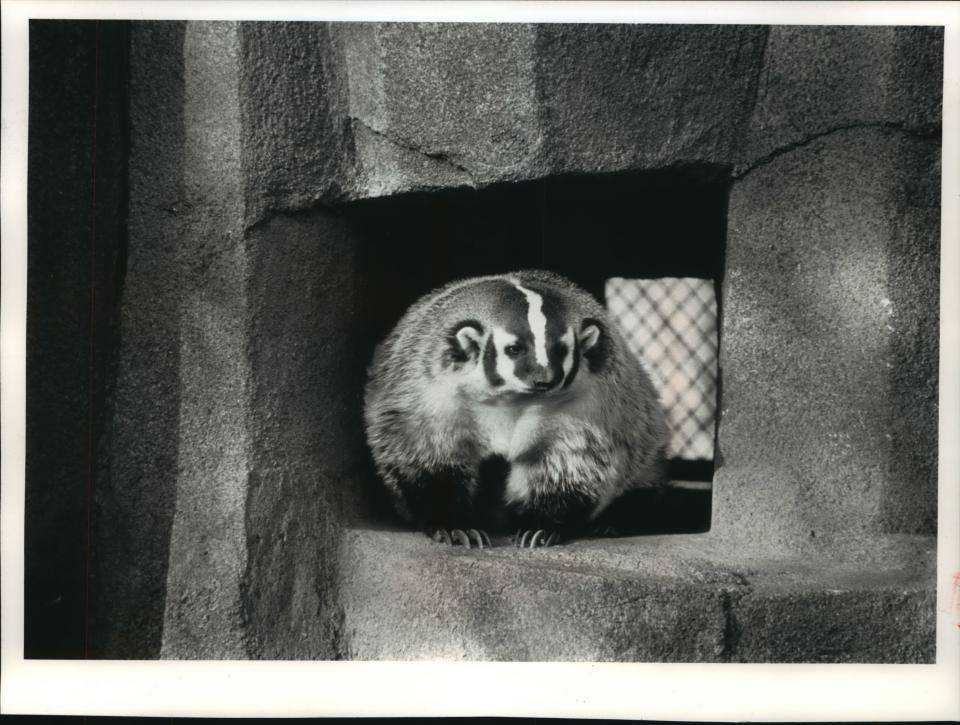Why is Wisconsin the Badger State — and do actual badgers live here?
The badger is an emblem of Wisconsin, from the state flag to collegiate football, Wisconsin is without a doubt the "Badger State."
But how did Wisconsin get the nickname? And are there actually any badgers — those stocky, muscular members of the weasel family with black-and-white faces — in the state?

We're answering the question as part of What the Wisconsin? — the place at the Journal Sentinel where we take on readers' questions large and small about our state.
RELATED: When Milwaukee had electric streetcars, then and now
RELATED: Why Wisconsin's dialect, pronunciations are unique — and even vary within the state's borders
The nickname isn't about the animal, but lead mining
Indigenous tribes like the Ho-Chunk mined for materials like lead in Wisconsin for more than 1,000 years, particularly in the southwest region of the state near the Mississippi River.
It was used for things like body paint and weights for fishing nets, said Kurt Griesemer, a primary education coordinator at the Wisconsin Historical Society.
Soon, colonizers like the French began occupying Ho-Chunk lands in the early 1800s. As time went on, the Ho-Chunk were forced to give up their ancestral territory, and European miners took over the area.
Lead was extremely valuable at the time, Griesemer said. It was mostly used for ammunition, but also pipes, toys and paint. It was more promising than fur trading or farming. And so, the Lead Rush commenced.
But these miners were a bit unusual. Perhaps lacking the time and resources to build them, these miners didn't live in traditional forms of shelter like houses, Griesemer said.

Instead, they lived in dens or caves dug into hillsides.
Daniel Parkinson, a lead miner in New Diggings in 1827, described such dwellings for the second volume of "Wisconsin Historical Collections" published in 1856.
“A large hole or excavation being made in the side of a hill, or bluff, the top being covered over with poles, grass, and sod," Parkinson said. "A level way from the edge of the hole at the bottom was dug out, some 10 or 12 feet … forming a sheltered entrance.”
Subsequently, their burrowing earned the miners the nickname badgers, after the animal that uses its enormous claws for digging.
Lead mining peaked in the state in the mid-19th century. The ore supply was beginning to be exhausted, so there was less money to be made.
Still, the badger nickname stuck around for Wisconsinites, despite industries like farming and shipping being more prominent and long-lasting.
The exact reason, Griesemer said, is probably a combination of factors — the dramatic rise in population during the mining era, the profitability of Wisconsin mining and simply having an interesting story to tell.
Badger's legacy cemented in state seal and on campus
The animal became "cemented in Wisconsin's lore" in 1851, Griesemer said.
University of Wisconsin Chancellor John Lathrop created a state seal that was so hated that no record of it exists. It was then that Gov. Nelson Dewey and Chief Justice E.G. Ryan redesigned it to feature badgers — of both the four-legged and miner variety. This design stuck.
The University of Wisconsin-Madison began using the badger as its mascot in 1889 when intercollegiate football began, after the state's nickname. The university used to keep a live animal before it was deemed too dangerous.
It wasn't until nearly 100 years later that the badger became Wisconsin's official state animal in 1957. Four Jefferson County elementary-school students realized the animal had no official status in the state and petitioned to make a change. It narrowly beat out the white-tailed deer, which was designated as the state's official wildlife animal.
In 1959, "On, Wisconsin" became the official state song. The tune, written by William Purdy, had already been a popular football song for decades.
As the song goes, Wisconsin is the "grand old badger state!"
Real badgers do call Wisconsin home — but you may never see one
Badgers are "mysterious" creatures, said David Sample, an ecologist at Wisconsin's Department of Natural Resources.
"They are hard to know a lot about," he said.
Emily Latch, a professor of biological sciences at the University of Wisconsin-Milwaukee and a badger researcher, said beyond being elusive, badgers are just plain mean.

There aren't any badger experts in Wisconsin, she said, even though it's the state animal.
"Badgers are the most poorly researched medium-sized mammals in the country," Sample said.
Sample first began taking note of badgers while researching birds. He noticed holes and dens throughout Wisconsin's grasslands.
Badgers are mostly nocturnal — they sleep during the day and are awake at night. They are also fossorial, meaning they live primarily underground. These two factors make them incredibly difficult to track and observe, Sample said.
Sample worked on a study focusing on the habitat ecology of badgers in southeast Wisconsin with Tim Van Deelen, a professor of forest and wildlife ecology at the University of Wisconsin-Madison, and Jimmy Doyle, a graduate student.
Sample said he was astonished at the large presence that badgers have in the state. The researchers found that even though badgers are evasive, they are abundant and widespread in Wisconsin.
"That's something that surprised everyone," Latch said.
Badgers are protected in Wisconsin and are considered a nongame species. They are not eligible to be trapped or harvested, according to the DNR website.
Latch said she's heard from some Wisconsinites that, despite living in the state their whole lives, they have never seen a badger. But only six out of the state's 72 counties had no reported badger sightings.
UWM also conducted a badger study, headed by Latch, focusing on genetics, and found that Wisconsin badgers form a unique genetic group.
It should be a "source of pride" for the state, she said.
Our subscribers make this reporting possible. Please consider supporting local journalism by subscribing to the Journal Sentinel at jsonline.com/deal.
DOWNLOAD THE APP: Get the latest news, sports and more
This article originally appeared on Milwaukee Journal Sentinel: Why is Wisconsin the Badger State — and do actual badgers live here?

